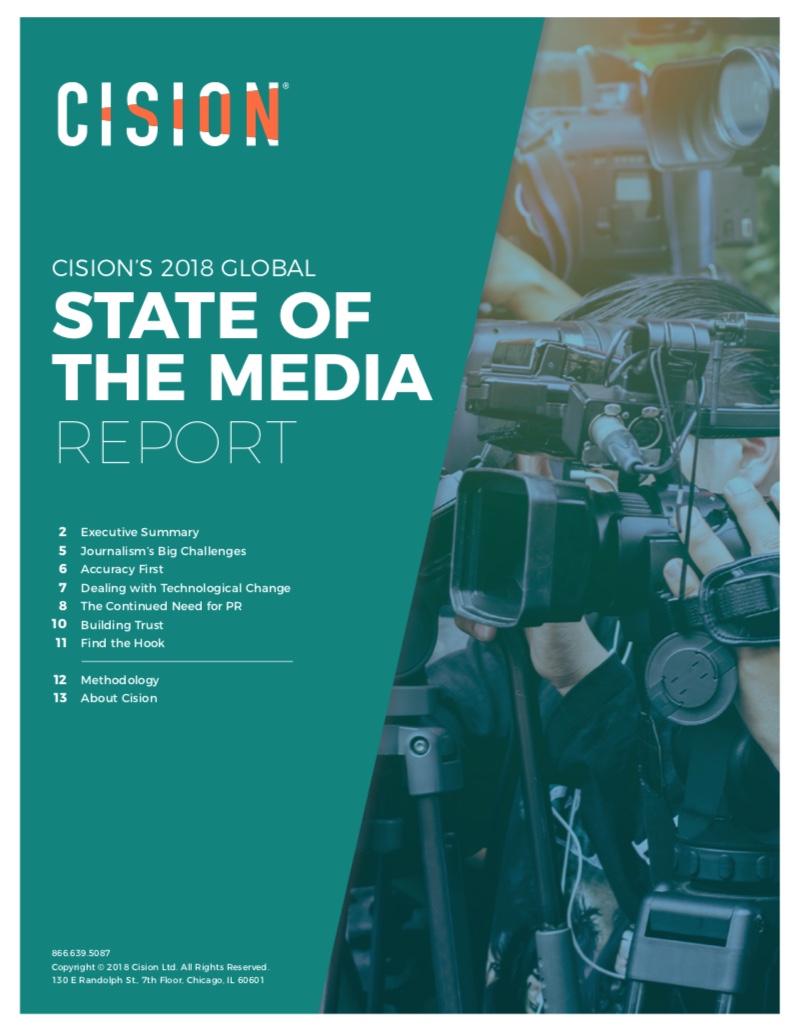 Early this year, we saw trust in traditional media bouncing back from its historic low point of a couple of year ago. At the time, we cited the 2018 Edelman Trust Barometer that showed traditional media outlets were indeed regaining much of the ground they’d lost in public confidence (although trust in social media continued to slide).
Early this year, we saw trust in traditional media bouncing back from its historic low point of a couple of year ago. At the time, we cited the 2018 Edelman Trust Barometer that showed traditional media outlets were indeed regaining much of the ground they’d lost in public confidence (although trust in social media continued to slide).
So is the crisis of mistrust in media truly waning? New research seems to suggest yes; the American public is slowly regaining confidence in traditional journalism.
“Trust in the media — or at least journalists’ perception of that trust — has improved somewhat since last year, according to a new survey from the public-relations software company Cision,” writes Folio’s Tony Silber in Forbes.
“Seventy-one percent of respondents in the 2018 Cision State of the Media Report indicated that they believe the public has lost trust in journalists. That’s clearly a problematic perspective, but it’s down by 20 points from the prior year, when 91% of respondents said they believe the public lost trust.”
The survey also pointed out that fake news remains a huge problem online, and social media “complicates the work of journalists” in several key ways. But in spite of the deadline pressures inherent in the 24/7 news cycle, the survey found that journalists believe “being 100% accurate is more important than being first on a story.”
“Seventy-five percent of respondents globally said getting a story right is most important. Only 10% said the same about being first, down from 13% in 2017,” Silber explains.
Fake news is still a major problem, with 56% of the journalists surveyed saying it was their biggest concern. On a positive note, 21% said that “the focus on combatting fake news has increased the importance of adhering to journalistic standards,” and 9% believe it’s actually helping improve public trust in established media brands.
We see this reflected in trends throughout the industry, like the downfall of ad-funded online journalism ala Buzzfeed, and the realization that most online consumers are really bad at spotting fake news. Meanwhile, a growing chorus of voices advocates for standing up for the truth and seeking out “real journalism.”
The tidal wave of mistrust in the media, while having political overtones to be sure, was largely a self-inflicted wound brought on by a quest for eyeballs via native ads and social popularity. Being seen was, to many who backed the online journalism model, more important than being accurate.
No more. Fake news did indeed help damp down native advertising, and consumers have become increasingly skeptical about the source of their news. So while Facebook certainly had its role in pulling the rug out from under journalistic integrity, in a very real way it was a good thing.
“One has to wonder (and this is meant as a nonpartisan observation) if the animosity toward the press expressed by the leader of the free world might have a ripple effect for years to come on journalism school enrollment — positive or negative,” wrote John Palumbo last spring in explaining why journalism should actually be grateful for the war on media.
“It certainly has sparked a recovery of sorts for the Times, the Post, and many more,” he notes.
Judging from the latest research of journalist attitudes, it’s done exactly that. We welcome this news as journalists and news brands do the right thing to earn back our collective trust.
